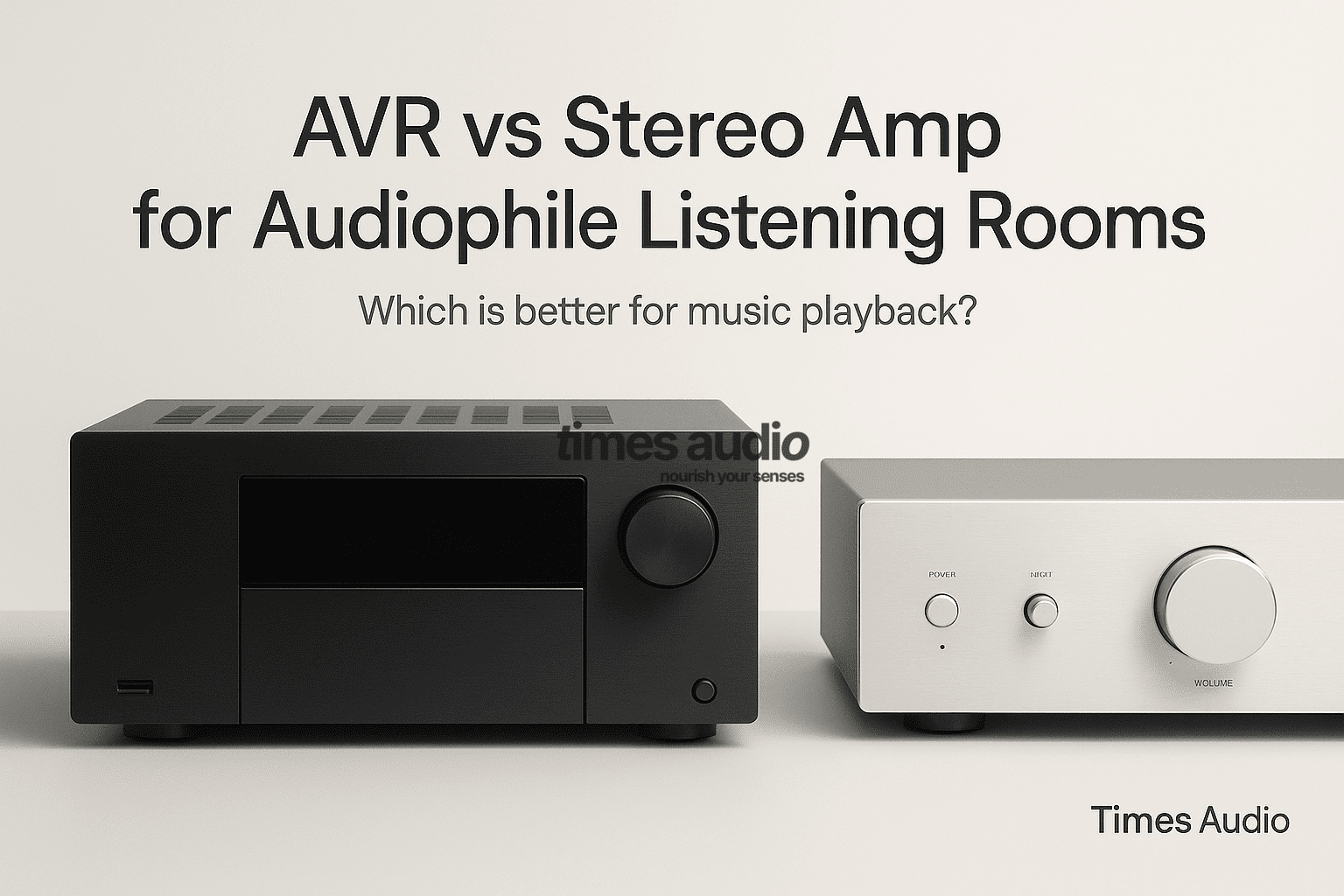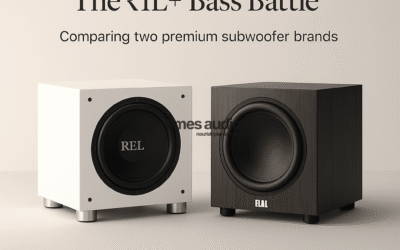When someone walks into Times Audio, Gurgaon, and asks, “What’s better for my listening room—an AVR or a stereo amp?” I know they care about sound, not just specs.
For those unfamiliar, AVR stands for Audio Video Receiver. It’s the backbone of most home theatres. A stereo amplifier, on the other hand, is built purely for music—just two channels, no HDMI, no video processing.
Now, at Times Audio (https://timesaudio.in/), we don’t deal in ₹1L starter kits. Our home theatre systems start at ₹10 lakh and up—excluding interiors and recliners. We work with clients in Gurgaon, DLF, South Delhi, Noida, and beyond who expect serious performance and aesthetic harmony.
So, Which Is Better for Audiophile Listening?
It depends on your primary use.
If your room is all about movies, with a big screen, Dolby Atmos, and immersive surround sound—an AVR from brands like Marantz or Anthem makes sense. AVRs are multi-taskers. They handle video, multiple speakers, room correction, and even streaming.
But for a pure, high-fidelity two-channel setup—for instance, if you’re building a music-first lounge or library in a DLF Phase 2 bungalow or a penthouse in South Delhi—a dedicated stereo amplifier is what you want.
Why Stereo Amps Still Matter in 2025
Most AVRs have a lot going on—HDMI switching, video scaling, surround decoding. That complexity introduces noise. With a stereo amp, everything is focused on two channels. Cleaner power. Less interference. More musicality.
A good stereo amp from Cambridge Audio, NAD, or Marantz (PM8006, Model 30) paired with bookshelf or floorstanding speakers from Q Acoustics, Dali, Bowers & Wilkins, or Wharfedale can outperform an AVR in pure musicality—especially at moderate volumes where tone and texture matter most.
We’ve set up such systems in luxury homes across Gurgaon—sometimes in a dedicated room, sometimes in an open-plan space with good acoustic treatment.
Use Case: A Client in DLF Phase 1
One of our recent clients came in planning a home theatre for a 300 sq ft room. Initially, he leaned towards a full surround setup. But once we understood his actual use—vinyl, hi-res digital music, jazz, and vocals—we steered him to a stereo-first setup.
We used a Marantz Model 30 amp, Bowers & Wilkins 704 S3 speakers, and a REL subwoofer. The result? A stunning soundstage, true low-end depth, and zero clutter from unnecessary channels. He later told us it changed the way he listens.
When Should You Choose an AVR?
- If you’re building a dedicated home theatre with 5.1, 7.1.4, or Atmos configurations
- If movies and sports are your top priority
- If you want one central device to control multiple sources (TV, PS5, Apple TV, etc.)
Brands we love in this space: Marantz Cinema Series, Anthem MRX series, and Arcam.
We usually match these with Paradigm, Klipsch, or Dali speaker systems, depending on room size and acoustic challenges.
When Should You Choose a Stereo Amp?
- If your space is dedicated to music listening
- If you value tonality, warmth, imaging, and detail
- If you have a well-treated room or listen in nearfield setups
A stereo amp demands fewer compromises. It simplifies the chain. And when paired with quality sources—like a Cambridge Audio CD transport or Bluesound Node streamer—the results can be exceptional.
Final Word
Don’t get caught in the features trap. The right choice depends on your room, your ears, and your listening habits. At Times Audio, we guide clients across Gurgaon and Delhi NCR to make informed decisions—because we know a ₹10L system that doesn’t match your needs is a ₹5L mistake waiting to happen.
Come experience both setups in-store. Hear the difference yourself.






